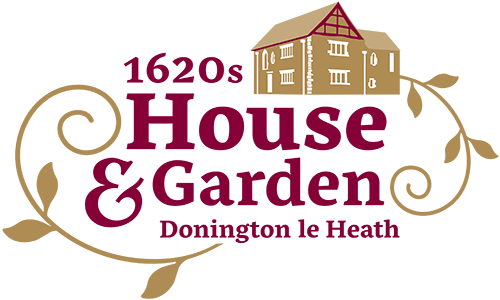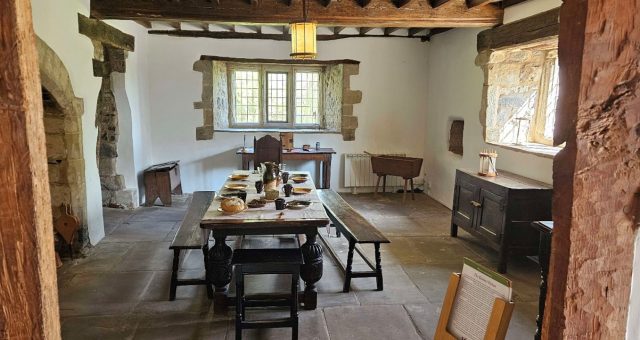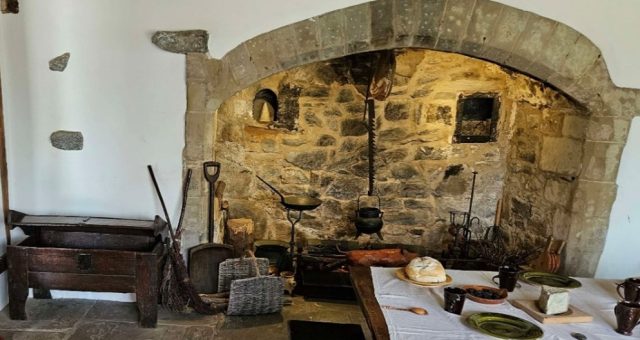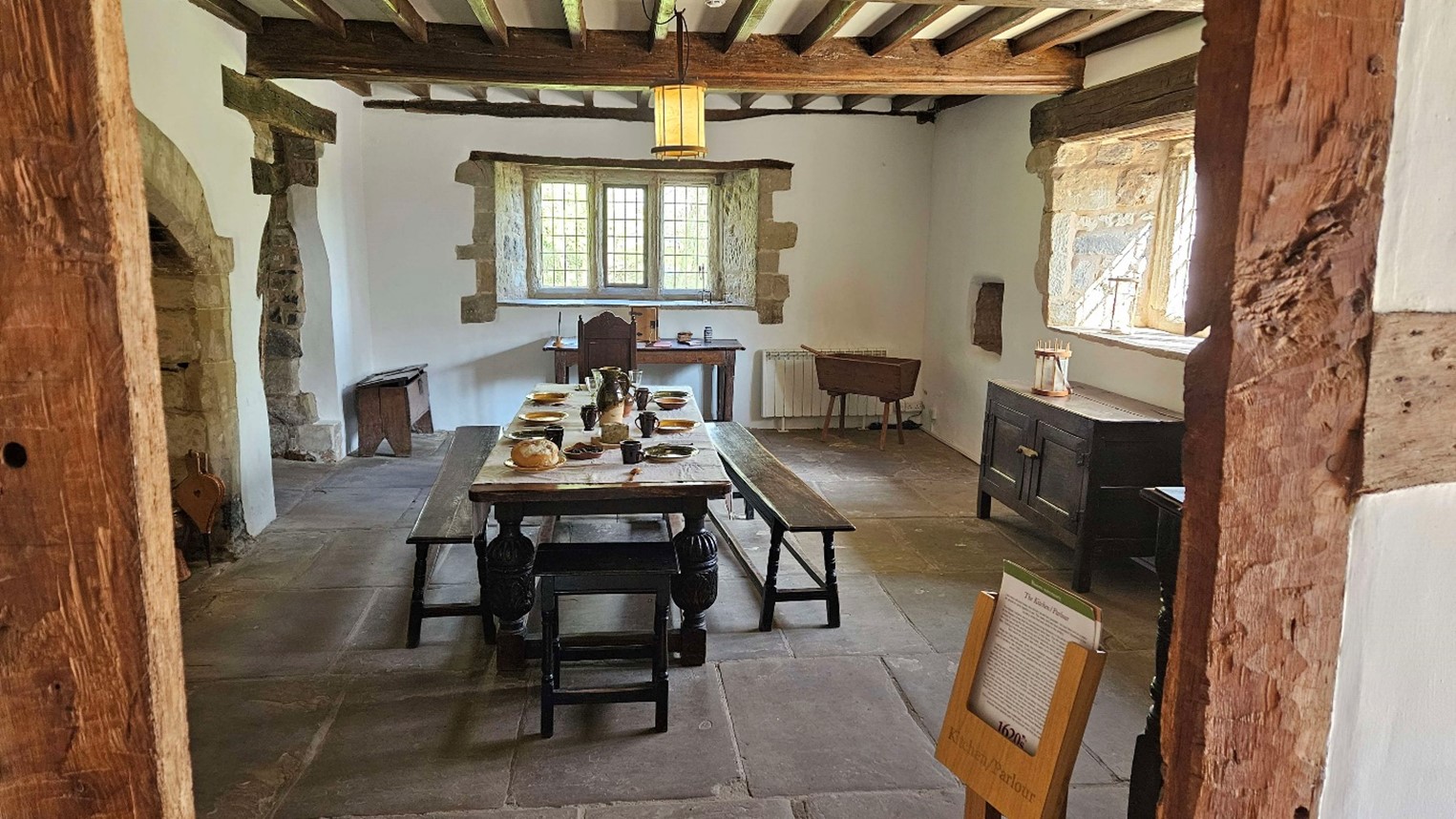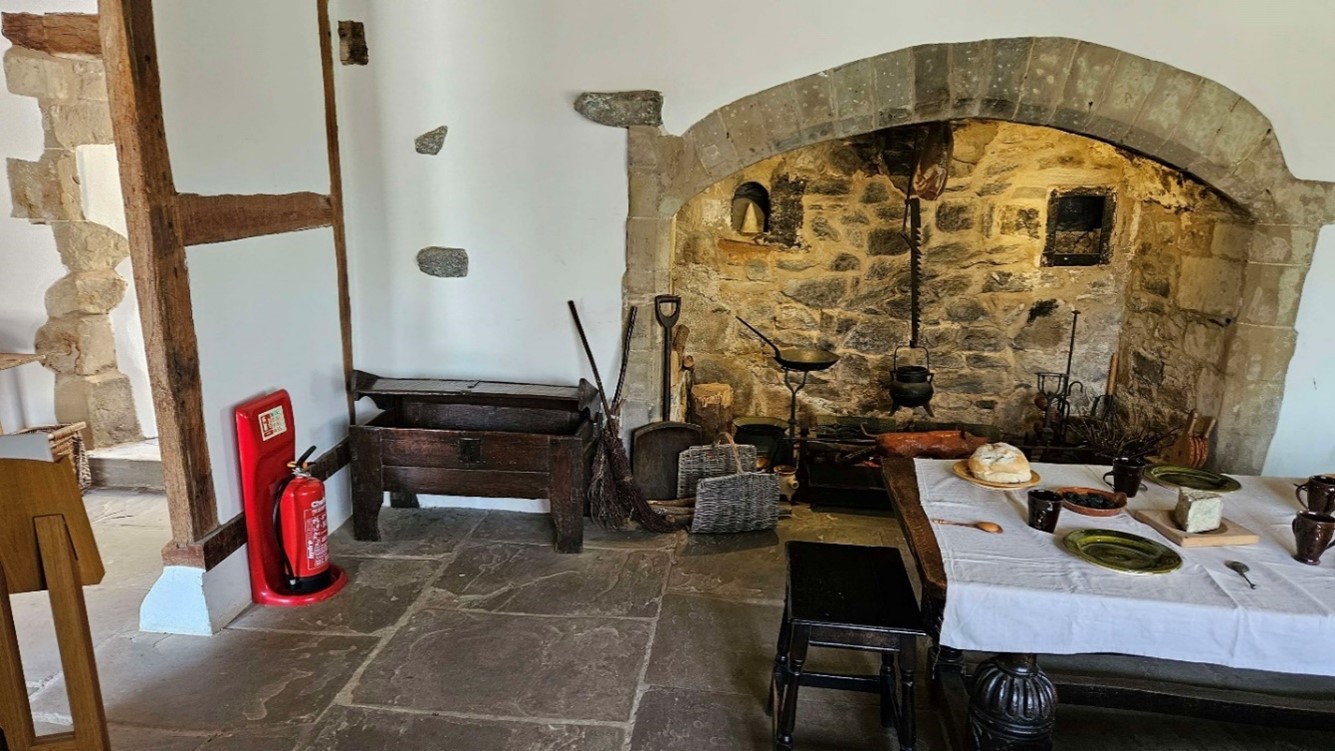The Kitchen / Parlour
Like many kitchens today, this kitchen served two purposes – to cook food and as a place for people to come together to eat. The messy and wet food preparation happened in the scullery, while food was stored in the buttery.
The kitchen contains one of only two surviving fireplaces in the whole house. The scale of the fireplace shows that the cooking was done here. This fire would have been almost always lit, making this the warmest room in the house. This is where the housekeeper and cook would work, and the family and the servants would eat together here on most days, making it the social centre of the house. When the family were entertaining guests, food would be prepared here and taken up to the Great Chamber.
When the Digby family were away, the housekeeper would cook simple food for her family and the other servants. A cook was brought in to prepare food when the family were in residence. Mrs Digby would have selected menus from her new recipe book and would have closely guarded the key to the spice box.
Cooking was limited to what could be produced on the open fire and surrounding ovens. Meat would be roasted on the spit or boiled in a large cauldron. Game was plentiful and would have been available in the local forests and fields from the autumn through to the beginning of spring. Fresh fish from the estate’s own pond and eels from the river would be a welcome change from dried and salted sea fish. The grain ark would contain dried peas and beans, used to make pottage or pease pudding. Salt would have been kept near to the fire to keep it dry. Pudding cloths were a new invention, enabling ingredients like flour, eggs, butter, sugar, suet and raisins to be tied up in a cloth and boiled with the meat and vegetables.
The early 1600s saw many new and exotic foods being introduced to England, as a result of the discovery of the Americas. Foods like potatoes, peppers and tomatoes would have only been eaten by the very rich, but these new ingredients and the influence of the Royal Court created a fashion for new ways of preparing food and sharing recipes. Many recipe books were published at this time, including The English Hus-wife, The Accomplish’d Lady’s Delight and The Genteel House-Keepers Pastime.
This is one of the rooms that was modernised in about 1618, when the medieval windows were replaced with the mullioned ones that you see today.
Go through the doorway on the far left of the Kitchen to
